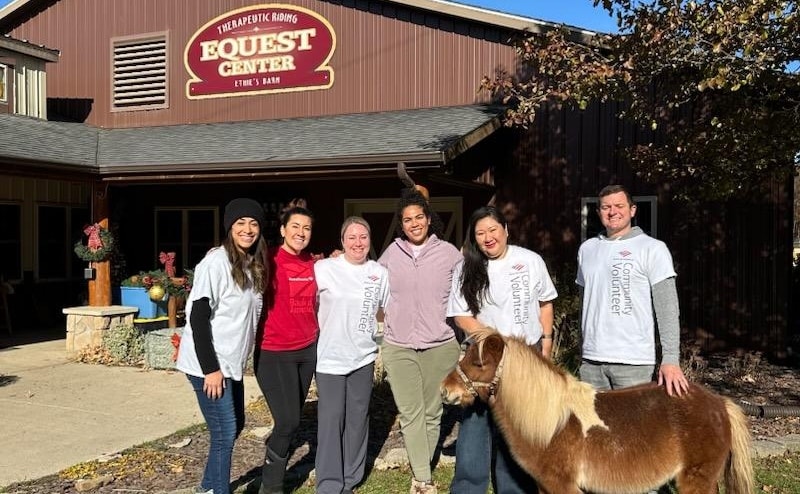How homeownership can play a role in the fight against gentrification and blight
Housing stability can have a significant impact on how successful an individual is finding and maintaining employment. While the current housing system has failed to ensure the most vulnerable have access to safe and affordable housing, local advocates are finding ways to connect residents to resources and support.

It was 2014 and Tracy Byrd didn’t know how she was going to pay to get her roof fixed.
Her roof already had two layers of shingles on it but it could no longer keep wild animals and water from coming into her home.
“One day I come home, and I see water leaking into my living room downstairs because we had a bunch of rain. So, now the roof was leaking, not only in the upstairs bedroom, but down into my living room,” she says.
Byrd was working full time and was able to pay for her basic monthly needs, but she did not have enough money in her bank account to fix her roof.
Not having savings or generational wealth to fall back on, Byrd started doing the hard work of connecting with local nonprofit organizations that could potentially help her with some of the costs.
After spending several weeks calling and asking her neighbors for advice, she connected with Seeds of Promise Executive Director Ron Jimmerson.
“He told me I didn’t have to worry, and they were going to do everything they could to help me find the funds I needed to fix my roof,” Byrd says.
Through the Seeds of Promise Housing Impact Team, Byrd learned about the Neighborhood Impact Program (NIP) housed at Seeds.
NIP is a program through the federal government that provides existing homeowners with income at or below 80% of the area median income who need help paying for necessary repairs to their home. According to U.S. Census data, Michigan’s area median income is $57,000.
Byrd qualified for the program and was the first individual to receive an NIP grant through Seeds of Promise.
“I don’t know how I would have gotten [my roof] fixed. I do not know because I kept putting a patch on it but, after a certain point, it wasn’t working,” Byrd says.

Jimmerson says Byrd is not alone and that many residents living in the Madison Square neighborhood struggle to maintain their homes.
“It’s not because they don’t want to keep their home in good working order, but many are facing financial barriers,” he says.
According to data from 2016 obtained from Dorothy A. Johnson Center for Philanthropy (Johnson Center) at Grand Valley State University residents in the area are spending more on rent than 30% of their income and are consistently left with very little to cover the rest of their basic needs each month.
According to Jimmerson, in the last few years, the area has seen many Black and Latinx residents move out because of the increase in rents.
“We have some of the highest rental rates in the city and that doesn’t help much. So, what we are really trying to do is get homes developed and do repairs to existing homes,” he says.
A 2017 report from the Urban Institute explains that factors like lacking a safe and stable place to live and paying more than 30% of income on housing costs can prevent individuals from finding and maintaining meaningful employment and potentially negatively affect children’s educational prospects. In other words, when housing costs are over that 30% of income benchmark, an individual is less likely to succeed.
The long-term goal for the Housing Impact Team, according to Jimmerson, is to help more individuals in the 49507 ZIPcode become homeowners and assist those who already own homes have the resources to repair them.
“What the residents are wanting to see is affordable housing, not affordable apartment buildings or rentals, but affordable housing that they can actually buy,” he says.
While the process to engage with residents, connect them with housing options and the funds to repair their homes isn’t easy, Jimmerson believes he has the resources at Seeds of Promise to be able to do it.
“We have programs and the ability to create opportunities for our residents so they can stay in [our community] and thrive,” Jimmerson says.

This is where Byrd comes in. As an ambassador for the Seeds of Promise Housing Impact Team, she works with and connects residents to the resources available.
While some residents are hesitant to sign up for a grant like the one she received, she begins by working on building relationships first.
“People think it’s too good to be true, but the resources are there and [residents] deserve to have access to them,” Byrd says.
For Byrd, the grant’s impact was about more than just a new roof for her home — it was about giving her the freedom she needed. The freedom to not be overwhelmed and stressed about having to pay for a roof she couldn’t afford. The freedom to not have to worry about whether her home was going to be an unsafe place to live.
Today, Byrd wants to give that same freedom to others in her community.
Southeast Strong is a series funded by the City of Grand Rapids that is focused on the multi-faceted neighborhoods of the city’s southeast corridor. Through the exploration of the neighborhoods’ entrepreneurs, nonprofits, and community members, the series’ local storytellers will highlight the resiliency of resident voices and projects, especially during COVID-19 recovery.









